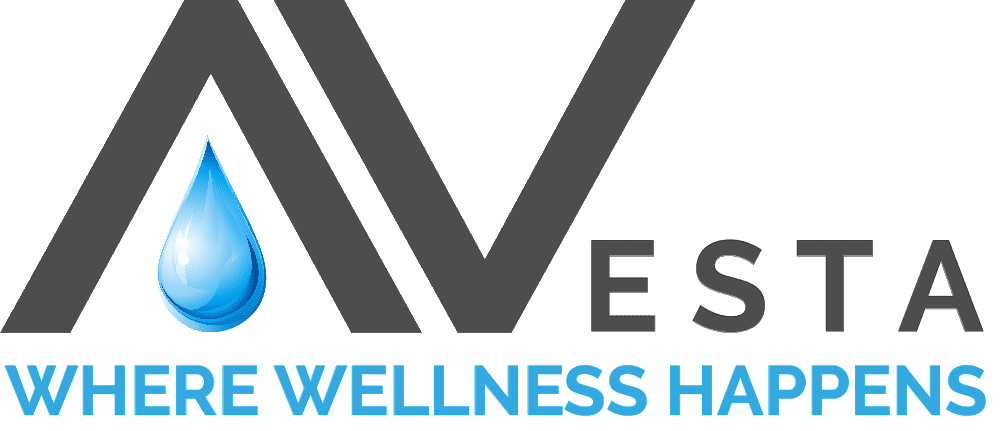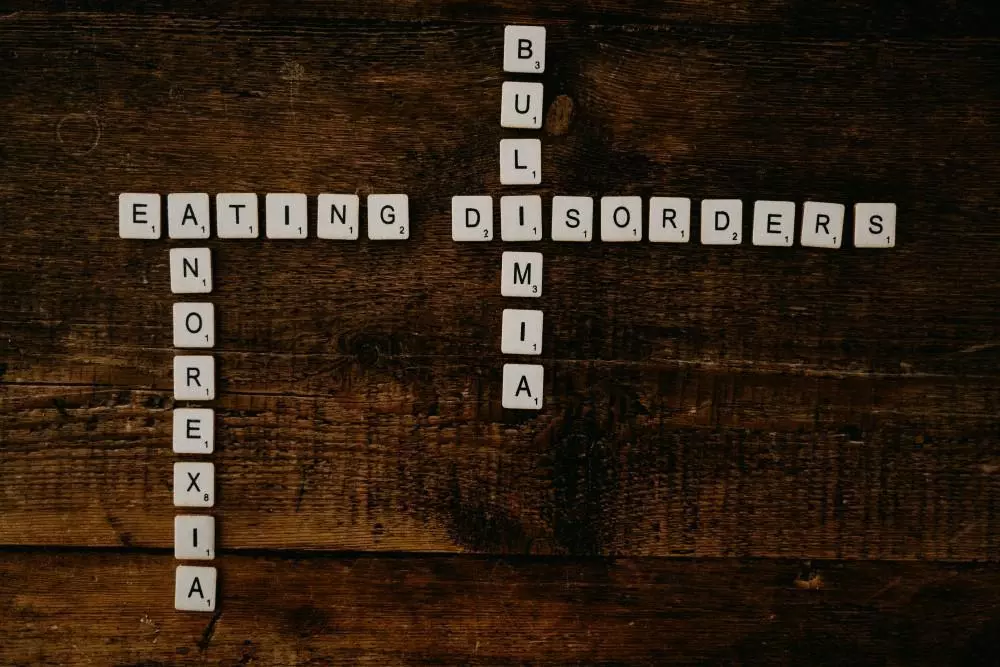Ketamine can treat a variety of illnesses. There is potential for it to treat psychiatric disorders like depression, anxiety, addiction, and PTSD (Keeler, 2021). For major depressive disorder, it typically takes three weeks for antidepressants like serotonin selective reuptake inhibitors to begin working (Peng, 2020). As a kind of anesthetic, Ketamine can alleviate major depressive disorder symptoms at a faster pace – it’s even known to be an effective treatment for treatment-resistant depression (Peng, 2020).
Anorexia nervosa (AN) may be another disorder that Ketamine helps. As it stands now, AN is complex and challenging to treat (Keeler, 2021). AN is a disorder where the patient uses “unusual eating habits to cope with stress, anxiety, and low self-esteem” (John Hopkins Medicine). Some common risk factors are “social attitudes, family influences, genetics, brain chemical imbalances, and developmental issues” (John Hopkins Medicine). Symptoms of AN are often difficult to cope with, as they circle body image, eating, and physical activity. According to John Hopkins Medicine, common symptoms are:
- Altered body image
- Low body weight
- Extreme fear of becoming overweight
- Excessive physical activity
- Denial of hunger
- Fixation with food preparation
- Unusual eating behaviors
- Poor nutritional status
- Dehydration
- Stomach pain or bloating
- Mood changes
- Withdrawal from social situations

Treatments for AN vary, but they may include nutritional aid, extensive therapy, and even medication (John Hopkins Medicine). Often, depression is prevalent in these patients, but it has been found that traditional antidepressants are less efficient at tackling said depression, specifically in underweight patients – this leads to an urgent need for new treatment options (Keeler, 2021).
Ketamine may be an excellent alternative to traditional antidepressants. When administered in combination with other therapies, Ketamine has been shown to promote cognitive flexibility, open-mindedness, and the corresponding ability to look outside oneself (Keeler, 2021).
Ketamine also dysregulates glutamatergic transmission, which has solid potential to alleviate symptoms of substance use disorders, eating disorders, and obsessive-compulsive disorders (Martinotti, 2021). Essentially, its “rapid antidepressant effects, which are hypothesized to occur via increases in glutamate,” allow for increased neuroplasticity (the brain’s ability to modify structure and function to function throughout life and in response to experience), neurogenesis (the forming of new neurons in the brain) and synaptogenesis (the formation of synapses, where information is transmitted) (Keeler, 2021).
In AN, zinc deficiency is common (Hermens, 2000). Zinc is essential for bodily functions; specifically, it is a group of substances that bind to NMDA receptors and alter those receptors’ responses to stimuli (Hermens, 2020). Since patients diagnosed with AN have this lack of zinc, Ketamine could be a suitable alternative. Ketamine is an NMDA receptor antagonist; it blocks receptors by attaching without activating them (Hermens, 2020). The combination of Zinc and Ketamine, both of which are used at Avesta, really enhances recovery in AN.
It’s important to note that because ketamine research is still evolving, some safety concerns need to be considered before treatment (Keeler, 2021. Since cardiac issues are a notable feature of AN, ketamine use should be monitored because it can be associated with abrupt changes in blood pressure and heart rate (Keeler, 2021). At Avesta, the highly trained staff monitors both of these parameters carefully. Further research and studies are needed to uncover the full potential – and risks – of ketamine use as a treatment for AN.
Currently, the treatment options for AN are limited in their efficacy and scope (Keeler, 2021). More specifically, for “severe-enduring cases,” addressing them efficiently poses the biggest challenge to clinicians and researchers (Keeler, 2021). In this way, Ketamine, while requiring more research and studies, is a possibly suitable alternative for treating AN.
At Avesta Ketamine and Wellness, we offer individualistic ketamine infusion treatment plans for patients suffering from a variety of disorders, both physical and mental. We tailor our treatments to take in a plethora of variables (i.e., from lifestyle habits to medication treatment plans) because we understand that one’s journey toward holistic wellness is never linear; we believe a step forward, no matter how big or small, is still progress. Please contact us to see if we may be of help.

References:
Anorexia nervosa. Johns Hopkins Medicine. (2021, August 8). Retrieved June 25, 2022, from https://www.hopkinsmedicine.org/health/conditions-and-diseases/eating-disorders/anorexia-nervosa
Hermens, D. F., Simcock, G., Dutton, M., Boucas, A., Can, A., Lilley, C., & Lagopoulos, J. (2020, July 13). Anorexia nervosa, zinc deficiency and the glutamate system: The ketamine option. Progress in neuro-psychopharmacology & biological psychiatry. Retrieved June 25, 2022, from https://pubmed.ncbi.nlm.nih.gov/32169564/
Indian Health Service. (n.d.). Pharmacological treatment: Medication assisted recovery. Opioids. Retrieved June 25, 2022, from https://www.ihs.gov/opioids/recovery/pharmatreatment/
Keeler, J. L., Treasure, J., Juruena, M. F., Kan, C., & Himmerich, H. (2021, November 20). Ketamine as a treatment for anorexia nervosa: A narrative review. Nutrients. Retrieved June 25, 2022, from https://www.ncbi.nlm.nih.gov/pmc/articles/PMC8625822/
Martinotti, G., Chiappini, S., Pettorruso, M., Mosca, A., Miuli, A., Di Carlo, F., D’Andrea, G., Collevecchio, R., Muzio, I., Sensi, S., & Giannantonio, M. (2021, June 27). Therapeutic potentials of Ketamine and esketamine in obsessive-compulsive disorder (OCD), Substance Use Disorders (SUD) and eating disorders (ed): A review of the current literature. Brain sciences. Retrieved June 25, 2022, from https://pubmed.ncbi.nlm.nih.gov/34199023/
Mills, I. H., Merriman, R. J., Manara, A. R., & Park, G. R. (1998, July). Treatment of compulsive behaviour in eating disorders with intermittent ketamine infusions. QJM : monthly journal of the Association of Physicians. Retrieved June 25, 2022, from https://pubmed.ncbi.nlm.nih.gov/9797933/
Peng, F. Z., Fan, J., Ge, T. T., Liu, Q. Q., & Li, B. J. (2020, May). Rapid anti-depressant-like effects of Ketamine and other candidates: Molecular and Cellular Mechanisms. Cell proliferation. Retrieved June 25, 2022, from https://www.ncbi.nlm.nih.gov/pmc/articles/PMC7260066/
University of Queensland. (2021, April 23). What is neurogenesis? Queensland Brain Institute. Retrieved June 26, 2022, from https://qbi.uq.edu.au/brain-basics/brain-physiology/what-neurogenesis
Varoqueaux, F., & Brose, N. (2002). Synaptogenesis. Synaptogenesis – an overview | ScienceDirect Topics. Retrieved June 26, 2022, from https://www.sciencedirect.com/topics/biochemistry-genetics-and-molecular-biology/synaptogenesis
Voss, P., Thomas, M. E., Cisneros-Franco, J. M., & de Villers-Sidani, É. (2017, October 4). Dynamic Brains and the changing rules of neuroplasticity: Implications for learning and recovery. Frontiers. Retrieved June 26, 2022, from https://www.frontiersin.org/articles/10.3389/fpsyg.2017.01657/full
Photo Source: https://unsplash.com/photos/DDyMG1LZaHo
Author Dr. Ladan Eshkevari, PhD, CRNA, FAAN Dr. Eshkevari is the lead clinician at Avesta, and is a long time researcher and educator in physiology, biophysics, and anesthesiology. She is passionate about assisting patients with retractable, difficult to treat mood disorders, and relies on the latest research to bring evidence to Avesta’s practice to better understand and serve patients.
Ketamine can treat a variety of illnesses. There is potential for it to treat psychiatric disorders like depression, anxiety, addiction, and PTSD (Keeler, 2021). For major depressive disorder, it typically takes three weeks for antidepressants like serotonin selective reuptake inhibitors to begin working (Peng, 2020). As a kind of anesthetic, Ketamine can alleviate major depressive disorder symptoms at a faster pace – it’s even known to be an effective treatment for treatment-resistant depression (Peng, 2020).
Anorexia nervosa (AN) may be another disorder that Ketamine helps. As it stands now, AN is complex and challenging to treat (Keeler, 2021). AN is a disorder where the patient uses “unusual eating habits to cope with stress, anxiety, and low self-esteem” (John Hopkins Medicine). Some common risk factors are “social attitudes, family influences, genetics, brain chemical imbalances, and developmental issues” (John Hopkins Medicine). Symptoms of AN are often difficult to cope with, as they circle body image, eating, and physical activity. According to John Hopkins Medicine, common symptoms are:
- Altered body image
- Low body weight
- Extreme fear of becoming overweight
- Excessive physical activity
- Denial of hunger
- Fixation with food preparation
- Unusual eating behaviors
- Poor nutritional status
- Dehydration
- Stomach pain or bloating
- Mood changes
- Withdrawal from social situations
Treatments for AN vary, but they may include nutritional aid, extensive therapy, and even medication (John Hopkins Medicine). Often, depression is prevalent in these patients, but it has been found that traditional antidepressants are less efficient at tackling said depression, specifically in underweight patients – this leads to an urgent need for new treatment options (Keeler, 2021).
Ketamine may be an excellent alternative to traditional antidepressants. When administered in combination with other therapies, Ketamine has been shown to promote cognitive flexibility, open-mindedness, and the corresponding ability to look outside oneself (Keeler, 2021).
Ketamine also dysregulates glutamatergic transmission, which has solid potential to alleviate symptoms of substance use disorders, eating disorders, and obsessive-compulsive disorders (Martinotti, 2021). Essentially, its “rapid antidepressant effects, which are hypothesized to occur via increases in glutamate,” allow for increased neuroplasticity (the brain’s ability to modify structure and function to function throughout life and in response to experience), neurogenesis (the forming of new neurons in the brain) and synaptogenesis (the formation of synapses, where information is transmitted) (Keeler, 2021).
In AN, zinc deficiency is common (Hermens, 2000). Zinc is essential for bodily functions; specifically, it is a group of substances that bind to NMDA receptors and alter those receptors’ responses to stimuli (Hermens, 2020). Since patients diagnosed with AN have this lack of zinc, Ketamine could be a suitable alternative. Ketamine is an NMDA receptor antagonist; it blocks receptors by attaching without activating them (Hermens, 2020). The combination of Zinc and Ketamine, both of which are used at Avesta, really enhances recovery in AN.
It’s important to note that because ketamine research is still evolving, some safety concerns need to be considered before treatment (Keeler, 2021. Since cardiac issues are a notable feature of AN, ketamine use should be monitored because it can be associated with abrupt changes in blood pressure and heart rate (Keeler, 2021). At Avesta, the highly trained staff monitors both of these parameters carefully. Further research and studies are needed to uncover the full potential – and risks – of ketamine use as a treatment for AN.
Currently, the treatment options for AN are limited in their efficacy and scope (Keeler, 2021). More specifically, for “severe-enduring cases,” addressing them efficiently poses the biggest challenge to clinicians and researchers (Keeler, 2021). In this way, Ketamine, while requiring more research and studies, is a possibly suitable alternative for treating AN.
At Avesta Ketamine and Wellness, we offer individualistic ketamine infusion treatment plans for patients suffering from a variety of disorders, both physical and mental. We tailor our treatments to take in a plethora of variables (i.e., from lifestyle habits to medication treatment plans) because we understand that one’s journey toward holistic wellness is never linear; we believe a step forward, no matter how big or small, is still progress. Please contact us to see if we may be of help.
References:
Anorexia nervosa. Johns Hopkins Medicine. (2021, August 8). Retrieved June 25, 2022, from https://www.hopkinsmedicine.org/health/conditions-and-diseases/eating-disorders/anorexia-nervosa
Hermens, D. F., Simcock, G., Dutton, M., Boucas, A., Can, A., Lilley, C., & Lagopoulos, J. (2020, July 13). Anorexia nervosa, zinc deficiency and the glutamate system: The ketamine option. Progress in neuro-psychopharmacology & biological psychiatry. Retrieved June 25, 2022, from https://pubmed.ncbi.nlm.nih.gov/32169564/
Indian Health Service. (n.d.). Pharmacological treatment: Medication assisted recovery. Opioids. Retrieved June 25, 2022, from https://www.ihs.gov/opioids/recovery/pharmatreatment/
Keeler, J. L., Treasure, J., Juruena, M. F., Kan, C., & Himmerich, H. (2021, November 20). Ketamine as a treatment for anorexia nervosa: A narrative review. Nutrients. Retrieved June 25, 2022, from https://www.ncbi.nlm.nih.gov/pmc/articles/PMC8625822/
Martinotti, G., Chiappini, S., Pettorruso, M., Mosca, A., Miuli, A., Di Carlo, F., D’Andrea, G., Collevecchio, R., Muzio, I., Sensi, S., & Giannantonio, M. (2021, June 27). Therapeutic potentials of Ketamine and esketamine in obsessive-compulsive disorder (OCD), Substance Use Disorders (SUD) and eating disorders (ed): A review of the current literature. Brain sciences. Retrieved June 25, 2022, from https://pubmed.ncbi.nlm.nih.gov/34199023/
Mills, I. H., Merriman, R. J., Manara, A. R., & Park, G. R. (1998, July). Treatment of compulsive behaviour in eating disorders with intermittent ketamine infusions. QJM : monthly journal of the Association of Physicians. Retrieved June 25, 2022, from https://pubmed.ncbi.nlm.nih.gov/9797933/
Peng, F. Z., Fan, J., Ge, T. T., Liu, Q. Q., & Li, B. J. (2020, May). Rapid anti-depressant-like effects of Ketamine and other candidates: Molecular and Cellular Mechanisms. Cell proliferation. Retrieved June 25, 2022, from https://www.ncbi.nlm.nih.gov/pmc/articles/PMC7260066/
University of Queensland. (2021, April 23). What is neurogenesis? Queensland Brain Institute. Retrieved June 26, 2022, from https://qbi.uq.edu.au/brain-basics/brain-physiology/what-neurogenesis
Varoqueaux, F., & Brose, N. (2002). Synaptogenesis. Synaptogenesis – an overview | ScienceDirect Topics. Retrieved June 26, 2022, from https://www.sciencedirect.com/topics/biochemistry-genetics-and-molecular-biology/synaptogenesis
Voss, P., Thomas, M. E., Cisneros-Franco, J. M., & de Villers-Sidani, É. (2017, October 4). Dynamic Brains and the changing rules of neuroplasticity: Implications for learning and recovery. Frontiers. Retrieved June 26, 2022, from https://www.frontiersin.org/articles/10.3389/fpsyg.2017.01657/full
Photo Source: https://unsplash.com/photos/DDyMG1LZaHo
Author Dr. Ladan Eshkevari, PhD, CRNA, FAAN Dr. Eshkevari is the lead clinician at Avesta, and is a long time researcher and educator in physiology, biophysics, and anesthesiology. She is passionate about assisting patients with retractable, difficult to treat mood disorders, and relies on the latest research to bring evidence to Avesta’s practice to better understand and serve patients.


